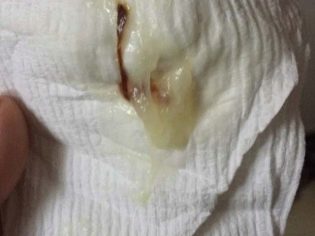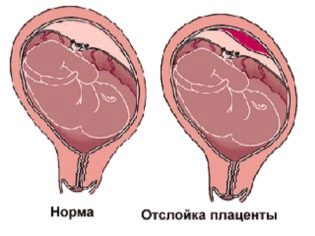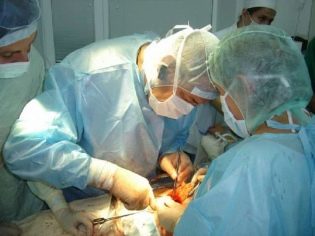Why can there be spotting during labor and what to do?
The process of labor contractions does not always take place in strict accordance with the textbook descriptions in medical textbooks. Much depends on the individual characteristics of the woman and her pregnancy.
Therefore, the appearance of bloody discharge at the stage of contractions is not uncommon. Is it normal and what to do if they appear, we will tell in this article.
The reasons
Contractions are rhythmic contractions of the uterine muscles, the purpose of which is to lead to the opening of the cervix. This process is painful and rather long. The neck needs to expand by 10-12 centimeters so that the baby’s head can pass. Often, the period of contractions is accompanied by the manifestation of various secretions, including bloody ones, associated with the discharge of cork mucosa.
A clot of mucus with blood veins tightly closes the cervical canal of the cervix throughout pregnancy. But when the active preparation of the female body for childbirth begins, the cervix becomes softer, smoothes, the cork can begin to depart either entirely or in parts.
It may look like light, yellowish or pink mucus with small streaks of blood. Such secretions can appear not only at the “forerunners” stage, but also during the fights.
You do not need to be afraid - a completely natural and physiological process of opening the cervix is underway for the subsequent release of the baby. It is only important to make sure that the discharge does not increase, does not turn into scarlet blood.
Small blood or brown discharge may occur with the onset of labor and after a gynecologist examination. After the woman arrives at the maternity hospital, she will definitely be examined, and therefore such secretions should also not be scary and alarming.
Scarlet blood during labor, copious blood discharge is a more disturbing situation. So premature placental abruption can occur. Normally, the “baby seat” leaves its place after the birth of the baby, in the postpartum period of childbirth. If an earlier detachment occurs, it is fraught with the occurrence of bleeding, a state of acute hypoxia for the child, which can lead to irreversible changes in his brain and the entire central nervous system. The baby may die.
Bright red, scarlet blood at the stage of contractions is not considered normal. Her appearance is a reason to call an ambulance if the woman is still at home, or to immediately inform the medical staff if the woman in childbirth is already in the obstetric institution.
Actions
When a heavy blood discharge occurs with the first contractions or a little later, you should immediately go to the maternity hospital and report this unpleasant news directly to the medical staff right at the door.
If there is a placental abruption, a woman will immediately undergo a caesarean section, since the delay is unacceptable.
For moderate bloody (do not confuse with bloody!) Discharge, use pads, avoid water entering the vagina, for example, while taking a shower at home before going to the maternity hospital or in the emergency room of the maternity hospital.
Without a mucous plug, the baby has no mechanical barrier protection against viruses, bacteria and fungi. If aggressive flora or microorganisms get into the uterine cavity, an internal infection can develop quickly, which is extremely dangerous for the baby and for the mother.
If the bloody or scarlet discharge is accompanied by the separation of a large amount of liquid, premature discharge of water is possible. In this situation, you should also go to the maternity hospital as soon as possible, without waiting for the contractions to become stronger. In the emergency room, you also need to immediately say that the flowing liquid was bloody, pink, brown, or another shade. This will help doctors quickly choose the right tactics of labor.
The main thing - do not panic and do not be nervous. Doctors have plenty of ways to cope with an abnormal situation that arose during childbirth. Trust them.
For selections, contractions, and other harbingers of childbirth, see the following video.



















